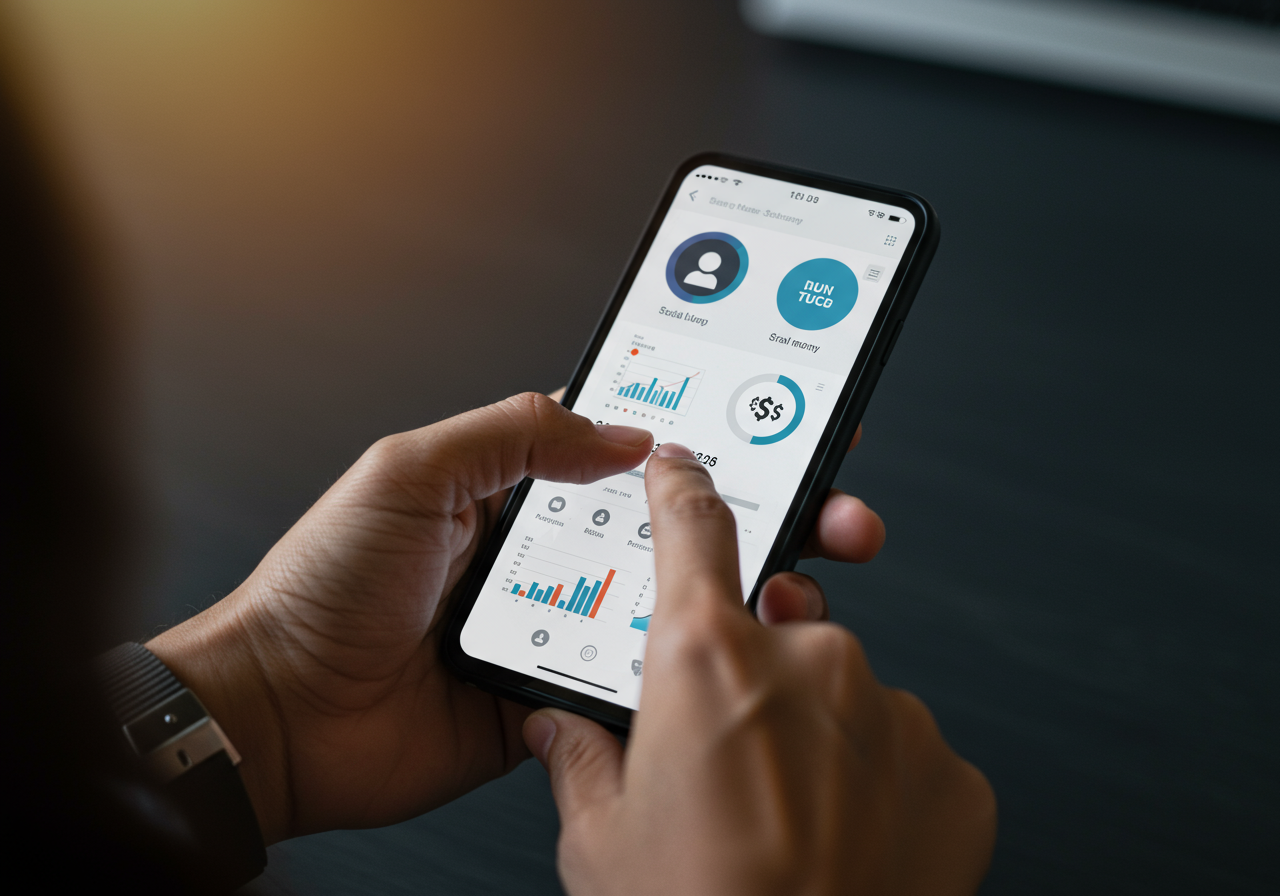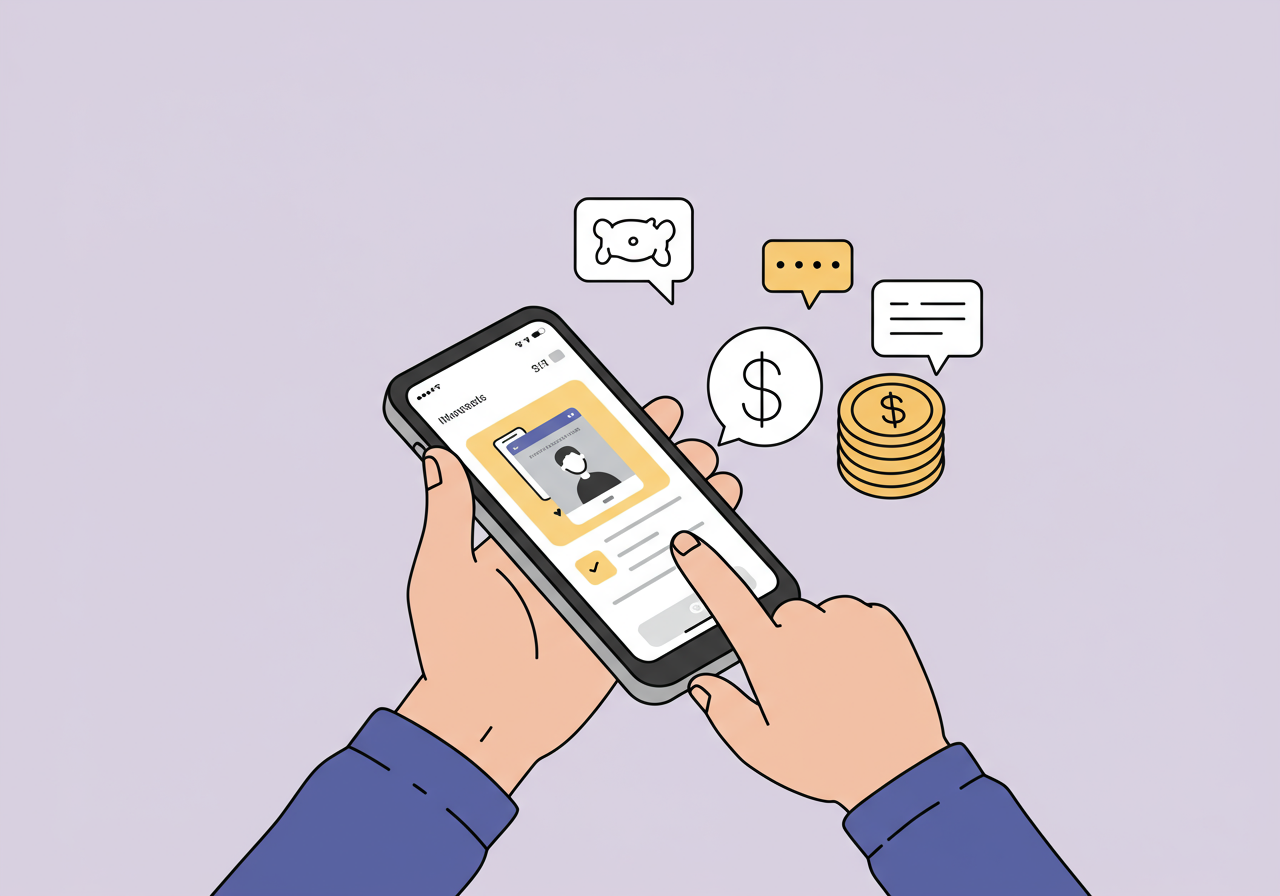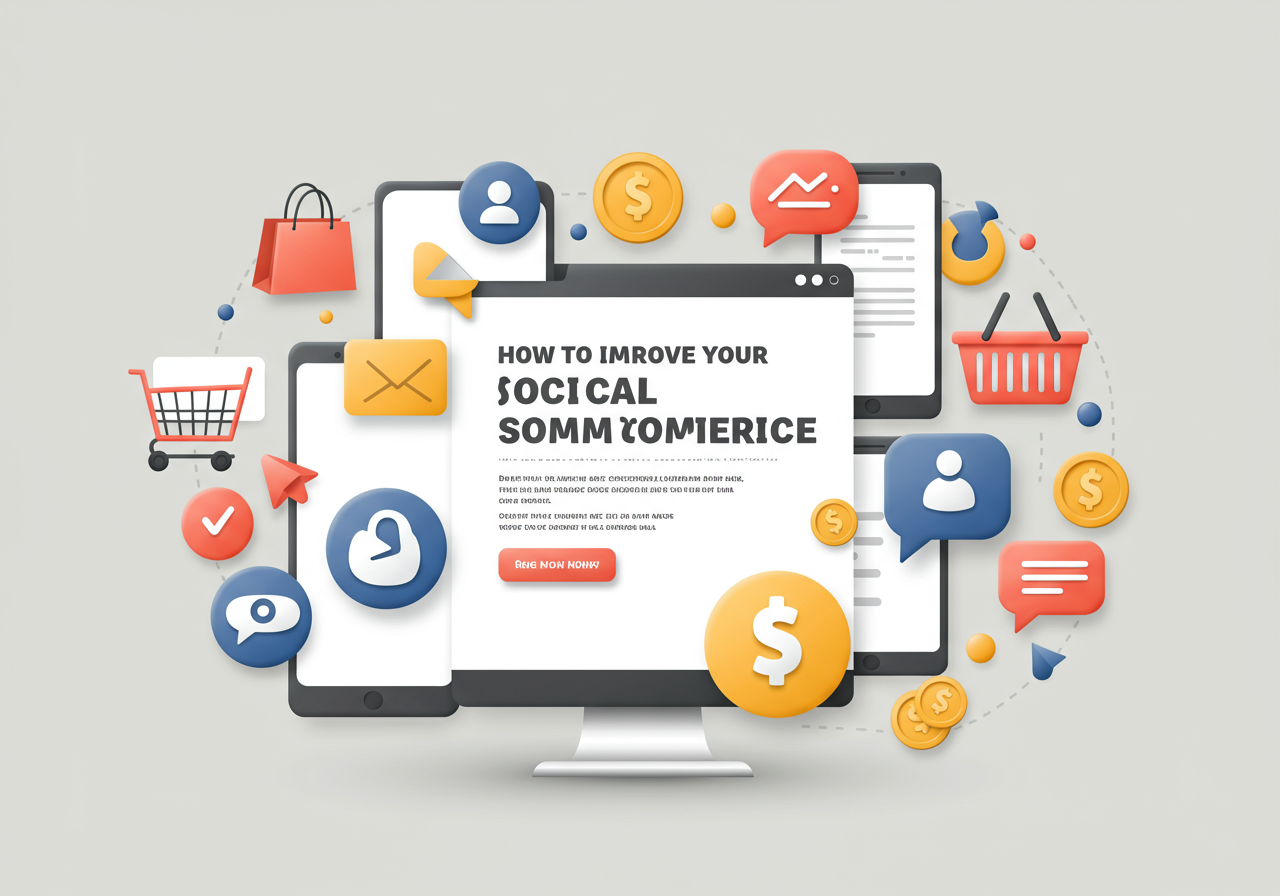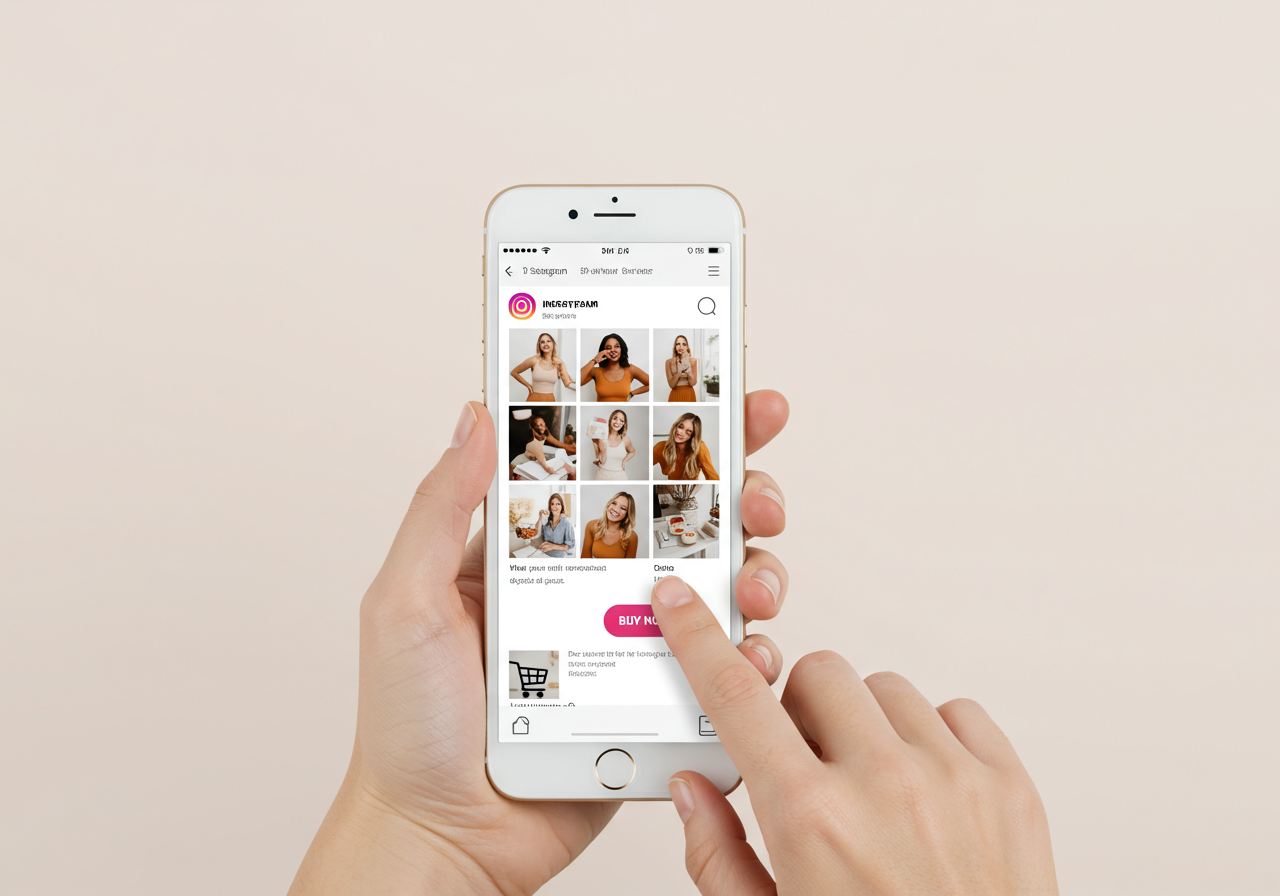Finally earning real money from my social app.
The journey from a passionate idea to a thriving, income-generating social application is often fraught with more challenges than most aspiring developers anticipate. I know this firsthand because I lived it. For years, my social app was a labor of love, a digital community I poured my heart into, but financially, it was a black hole. It wasn’t until I radically shifted my approach to monetization that I finally started seeing real, sustainable income, transforming a beloved hobby into a legitimate business. This article shares my story, my mistakes, and the exact strategies that helped me go from burning cash to earning real money from my social app.
The Genesis of My Social App

My journey began like many others: with a burning idea and a belief that I could connect people in a unique way. I envisioned a niche social platform where users could share their creative projects and receive constructive feedback from a supportive community. It wasn’t about mass appeal; it was about depth of connection and genuine interaction within a specific interest group. I spent countless hours, and a significant chunk of my savings, developing the app, meticulously crafting the user experience, and building a robust backend. The initial launch was exhilarating. Users flocked in, not by the millions, but consistently, and they loved the concept. The engagement metrics were fantastic: long session times, high daily active users relative to the total, and vibrant discussions. I felt like I had struck gold, not yet financially, but in terms of community and user satisfaction.
The early days were pure euphoria. Seeing strangers connect, collaborate, and share their passions on a platform I had created was incredibly rewarding. I was intoxicated by the positive feedback and the organic growth. Every new user, every shared project, every heartfelt comment fueled my dedication. I wasn’t thinking about earning money from my social app then; I was focused solely on building the best possible experience and fostering a strong community. The app was a testament to my vision, and I genuinely believed that if I built something great, the financial success would naturally follow. This period was crucial for establishing the app’s core identity and user base, laying the groundwork for what it would eventually become.
However, the reality of running a server, maintaining code, and supporting a growing user base quickly set in. Server costs mounted, development tools required subscriptions, and my personal savings began to dwindle. The app was a success in every metric except the one that paid the bills. I had a fantastic product, a loyal community, but absolutely no clear path to social app monetization. The initial excitement slowly gave way to a gnawing anxiety about how long I could sustain this passion project without it becoming a financial burden I couldn’t bear. This was the first sign that my idealistic approach needed a serious dose of business reality.
The Early App Struggle
Once the initial honeymoon phase wore off and the financial realities became undeniable, I started desperately looking for ways to monetize. My first attempts were, frankly, naive and driven by a shallow understanding of how to make money from a social app. I defaulted to the easiest, most common methods, hoping they would be enough. The first attempt was banner ads. I integrated a popular ad network, placing small banners at the bottom of screens, trying to be unobtrusive. The results were abysmal. The revenue was pennies, literally a few dollars a month, barely enough to cover a fraction of my server costs. The user experience, while not entirely ruined, definitely felt a little cheaper, a little less premium.
Next, I tried interstitial ads – full-screen ads that pop up between actions. This was an even bigger disaster. User complaints immediately spiked. People hated being interrupted while trying to engage with content or navigate the app. My carefully cultivated community, built on a seamless and focused experience, felt violated. I saw a noticeable dip in engagement and even some negative reviews mentioning the “”annoying ads.”” It became clear that aggressive advertising was antithetical to the very essence of my social platform. It cheapened the experience and actively drove users away, proving that not all app monetization strategies are suitable for every type of application, especially those built on community and connection.
I also dabbled with a very basic, single-tier “”premium”” subscription that offered ad removal and a slightly larger storage limit for uploaded projects. This generated a handful of subscriptions, mostly from my most ardent supporters who just wanted to help me out. It wasn’t a scalable model; the value proposition wasn’t strong enough to entice a significant portion of my user base. I was still operating under the assumption that users would pay simply because they liked the app, rather than because they received substantial, exclusive value. This period was marked by frustration and a growing sense of despair. I loved my app, but I was burning through my savings, and none of my initial attempts at earning money social app were bearing fruit. It felt like I was stuck in a vicious cycle, unable to grow without revenue, and unable to generate revenue without compromising the very thing that made my app special.
My Biggest Monetization Mistake
Looking back, my single biggest monetization mistake wasn’t just what I tried, but how I thought about it. I approached social app monetization with a mindset of scarcity and extraction, rather than value creation. My primary focus was on “”how can I get money from my users?”” instead of “”what additional value can I provide that users would willingly pay for?”” This fundamental misstep led me down a path of short-sighted decisions that nearly destroyed my app’s potential. I saw monetization as a necessary evil, something to be tacked on, rather than an integral part of the user experience.
This flawed mindset manifested most clearly in my attempts to gate basic features or introduce artificial limitations. For instance, I considered limiting the number of projects a free user could upload or restricting access to certain community forums unless they subscribed. The idea was to create friction that would push users towards a paid tier. However, this only served to alienate my existing user base, who had grown accustomed to a free and open platform. They had invested their time and creativity into the app under certain implicit assumptions, and suddenly changing the rules felt like a betrayal. I quickly realized that trying to force users to pay by taking away something they already had or expected was a surefire way to lose their trust and, ultimately, their engagement.
The lesson was harsh but invaluable: never compromise the core value proposition of your social app for monetization. My app’s core value was fostering a supportive community for creative projects. Any monetization strategy that hindered this — whether through intrusive ads or restrictive paywalls on essential features — was detrimental. It taught me that making money with a social media app isn’t about setting traps; it’s about enhancing the experience. I needed to shift my perspective from seeing monetization as a separate, often conflicting, goal to integrating it seamlessly into the value users already found in the app. This realization was the turning point, forcing me to rethink every aspect of my approach to monetize my social networking app.
Finding What Actually Works
The realization that my previous monetization attempts were fundamentally flawed was a tough pill to swallow, but it also became the catalyst for change. I stopped looking for quick fixes and started a deep dive into successful social app monetization strategies. I began by intensely studying other successful apps, not just social ones, but any application that had managed to build a loyal user base and generate significant revenue without alienating its community. I analyzed their revenue models, their pricing structures, and most importantly, how they integrated monetization into the user journey. The key insight was that successful apps often monetize around aspirations, convenience, or enhanced experiences, rather than basic functionality.
Crucially, I also started listening to my users with a new ear. I conducted surveys, ran polls, and engaged in direct conversations within the app’s community forums. I asked them what features they wished they had, what frustrations they encountered, and what they would hypothetically be willing to pay for if it genuinely improved their experience. This direct feedback was invaluable. It highlighted areas where users saw untapped potential and where they were willing to invest for a better, more powerful version of the app they already loved. It became clear that they valued things like deeper analytics on their projects, advanced organizational tools, exclusive access to expert workshops, or even simply a way to directly support the platform they cherished.
This shift in perspective — from “”how to extract”” to “”how to provide additional value”” — was revolutionary. I stopped viewing monetization as a necessary evil and started seeing it as an opportunity to enrich the user experience. I began to brainstorm features and services that truly added something extra, something beyond the core free offering, that aligned with the users’ goals and aspirations within the creative community. This iterative process of listening, ideating, and testing became my new mantra. It was a slower, more deliberate path, but it was the one that ultimately led me to discover how to earn real money from my social app in a way that felt ethical and sustainable, rather than exploitative.
My Top 3 Revenue Streams
After extensive research, user feedback, and a lot of experimentation, I finally landed on three primary revenue streams that genuinely worked for my social app without compromising its integrity or user experience. These weren’t quick fixes but carefully integrated features that provided tangible value. They allowed me to start earning money from my social app in a sustainable and scalable way.
- Premium Subscription Tiers: Instead of a single, basic “”pro”” tier, I introduced multiple subscription levels, each offering progressively more advanced features.
- Virtual Goods and Boosts: I introduced a virtual currency that users could purchase to “”boost”” their projects or profiles, increasing their visibility within the community for a limited time.
- Curated Educational Content & Workshops: Leveraging the expertise within my community, I partnered with established creators and experts to offer exclusive, paid workshops and premium tutorial series directly within the app.
- Optimize Existing Ad Placements (If Applicable, Ethically): If you already use ads, critically evaluate their placement and frequency.
- Introduce Small, High-Value In-App Purchases (IAPs): Think about small, non-essential but desirable items that enhance the user’s personal experience or expression.
- Offer “”Tip Jar”” or Direct Support Options: Many users genuinely want to support apps they love, especially if they are niche or community-focused.
- Early Access to New Features: Reward your most loyal and engaged users by offering them a chance to try upcoming features before anyone else, for a small fee or as part of a premium tier.
- Deeply Understand Your Users: Go beyond basic demographics. What are their core motivations for using your app? What problems does it solve for them? What are their aspirations within your community? What frustrates them? Conduct surveys, user interviews, and analyze their behavior. This is the foundation for any successful monetization.
- Identify Value-Add Opportunities: Based on your user understanding, brainstorm features or services that would significantly enhance their experience, save them time, or help them achieve their goals more effectively. These should be things that go beyond the core free functionality. Don’t think about what you can take away; think about what you can add.
- Research Diverse Monetization Models: Look beyond ads and basic subscriptions. Explore virtual goods, premium content, tiered access, sponsorships, affiliate marketing, and even direct support models. Consider what fits your app’s niche and user base best. Don’t be afraid to innovate and combine models.
- Start Small and Test: You don’t need to launch a full suite of monetization features at once. Pick one or two promising ideas, implement them carefully, and launch them to a segment of your users or as an optional feature. A/B test pricing, feature sets, and messaging. Gather feedback and data on their performance.
- Iterate and Refine: Use the data and feedback to refine your monetization strategies. What’s working? What’s not? Are there any unexpected negative impacts on user experience? Be prepared to adjust, pivot, or even scrap ideas that don’t resonate. This continuous cycle of learning and adaptation is key to long-term app development income.
* What it is: Users could upgrade to access features like enhanced project analytics (e.g., deeper insights into feedback, project performance over time), larger cloud storage for high-resolution assets, advanced portfolio customization options, and priority customer support. * How it works: Each tier was clearly outlined with its specific benefits, targeting different user needs – from casual enthusiasts wanting a bit more space to serious creators needing professional-grade tools. Why it works: It focused on aspiration and convenience*. Users who were serious about their craft saw the value in these tools as direct enablers of their goals. It wasn’t about removing ads; it was about providing powerful utilities that elevated their creative process within the app. For example, a “”Creator Pro”” tier offered detailed demographic breakdowns of who was viewing their projects and what kind of feedback they were receiving, which was invaluable for refining their work. This became a core part of my social app monetization strategy.
* What it is: Users could buy “”Spark Tokens”” which could then be spent on features like “”Project Spotlight”” (pinning their project to the top of category feeds for an hour) or “”Profile Boost”” (temporarily featuring their profile on the app’s homepage). * How it works: This was entirely optional and non-intrusive. It allowed users who wanted more exposure for their work to gain it, while not penalizing those who preferred to grow organically. * Why it works: It tapped into the human desire for recognition and visibility within a social context. It provided a fair, transparent way for users to gain a temporary advantage, directly aligning with the app’s purpose of sharing and getting feedback. It became an excellent way for how to make money social app without impacting the free user experience negatively.
* What it is: These were high-quality, in-depth learning experiences, often live, covering specific creative techniques or industry insights. * How it works: A portion of the fee went to the instructor, and the rest to the app. It provided immense value to users looking to hone their skills and offered a direct path for experts within the community to generate income. * Why it works: It transformed the app into a learning hub, not just a sharing platform. It offered tangible, high-value educational content that users were willing to pay for, especially when delivered by respected figures within their niche. This strategy not only generated significant revenue but also deepened community engagement and loyalty, proving to be one of the most effective app monetization strategies for my specific niche.
These three models, carefully integrated and continuously refined, allowed me to move beyond mere survival to actually thriving, demonstrating that earning money social app is entirely possible with the right approach.
Quick Wins You Can Steal
While my journey involved significant overhauls, there are several “”quick wins”” for making money with a social media app that you can implement relatively easily, even if your app is still in its early stages. These strategies focus on leveraging existing user behavior and adding value without drastic changes.
Actionable Advice: Instead of banner ads, consider native advertising that blends more seamlessly with your content (e.g., sponsored posts that look like regular content but are clearly marked). Limit interstitial ads to natural breaks in user flow, like between major sections or after a completed task, rather than interrupting core activities. A/B test different ad formats and placements to see what generates the best revenue with the least user friction. My mistake was aggressive placement; your quick win is smart* placement.
* Actionable Advice: For my creative app, this could be unique profile badges, custom color palettes for their project pages, or exclusive emoji packs for comments. These are typically low-cost items that allow users to personalize their experience or express their identity within the community, often driving impulse purchases. They don’t affect core functionality but add a touch of flair. This is a great way to explore how can I earn money from my social app? without a large development effort.
* Actionable Advice: Implement a simple “”Buy Me a Coffee”” or “”Support the Developer”” button, perhaps in the settings menu or on a “”About Us”” page. You can use platforms like Patreon for ongoing support or direct in-app purchase options for one-time contributions. Make it clear what their support helps achieve (e.g., “”helps cover server costs,”” “”funds new features””). You’d be surprised how many loyal users are willing to contribute a small amount just to ensure the app’s continued existence. This demonstrates that is it possible to make real money from a social app? even through simple, community-driven initiatives.
* Actionable Advice: This creates excitement and provides valuable feedback before a wider rollout. Frame it as an exclusive club or a way to directly influence the app’s future development. This can be a compelling incentive for a small, dedicated segment of your user base and a low-effort way to test the waters for future premium offerings.
These quick wins are about identifying small opportunities to add perceived value or tap into user generosity without disrupting the core experience. They can provide immediate, albeit modest, revenue boosts while you plan for more significant mobile app revenue models.
Is It Really Sustainable?
The question of sustainability is paramount for any business, and a social app is no exception. After finally achieving consistent revenue, my focus shifted from “”how to earn money”” to “”how to keep earning real money from my social app in the long term.”” The answer, I’ve learned, lies in continuous adaptation, unwavering commitment to user value, and a deep understanding of the evolving digital landscape. It’s not a set-it-and-forget-it endeavor; it’s an ongoing process.
One of the biggest challenges is maintaining user retention and engagement, which directly impacts revenue. The social app market is incredibly competitive, with new platforms emerging constantly and established giants continually evolving. To remain sustainable, my app needs to consistently offer fresh value. This means ongoing feature development, driven by user feedback and market trends. We regularly introduce new tools, update existing ones, and explore new ways for creators to connect and share. Stagnation is a death sentence in the app world. This continuous innovation ensures our app monetization strategies remain relevant and attractive.
Another critical aspect of sustainability is ethical monetization. I learned my lesson early on: trying to trick or coerce users into paying will backfire spectacularly. Our current revenue streams are designed to be transparent and provide clear value. We avoid dark patterns, hidden fees, or aggressive upsells. This builds trust within the community, making users more likely to invest in the app because they feel respected and valued. This ethical approach contributes significantly to the long-term viability of making money with a social media app.
Finally, data analysis plays a crucial role. We constantly monitor subscription rates, virtual item purchases, workshop attendance, and feature usage. This data helps us understand what’s working, what’s not, and where to focus our development and marketing efforts. It allows us to refine our pricing, introduce new premium features that users genuinely want, and deprecate those that aren’t performing. This iterative process of analysis and refinement is essential for ensuring that our mobile app revenue models remain robust and responsive to the needs of our community, ultimately proving that social media app success is not just about initial virality, but long-term strategic execution. It is indeed possible to make real, sustainable money from a social app, but it requires vigilance and a user-centric approach.
Your Next Step to Income
If you’re reading this, chances are you’re either struggling to monetize your social app or are planning to launch one with a solid monetization strategy from the outset. My journey from financial struggle to finally making money from my app wasn’t easy, but it provided invaluable lessons that I hope can guide your path. Your next step isn’t to blindly copy my revenue streams, but to apply the underlying principles to your unique app and community.
Here’s a clear, actionable framework to guide your transition towards earning money from your social app:
Remember, how to make money social app is not a one-size-fits-all answer. It’s a journey of understanding your community, providing genuine value, and strategically integrating revenue models that enhance, rather than detract from, the user experience. The potential for earning real money from my social app exists for yours too, but it requires patience, persistence, and a user-first mindset.
My journey from a struggling app developer to someone who finally earns real money from their social app has been transformative. It wasn’t about finding a magic bullet, but about fundamentally changing my approach to monetization. I shifted from a mindset of extracting value to one of creating and enhancing it, always prioritizing the user experience and the integrity of my community. The key takeaways are clear: deeply understand your users, build monetization strategies around genuine added value, and be prepared to iterate and adapt constantly. It’s a challenging path, but with the right focus and ethical approach, earning real money from your social app is not just a dream – it’s an achievable reality that can turn your passion project into a thriving, sustainable business.


















